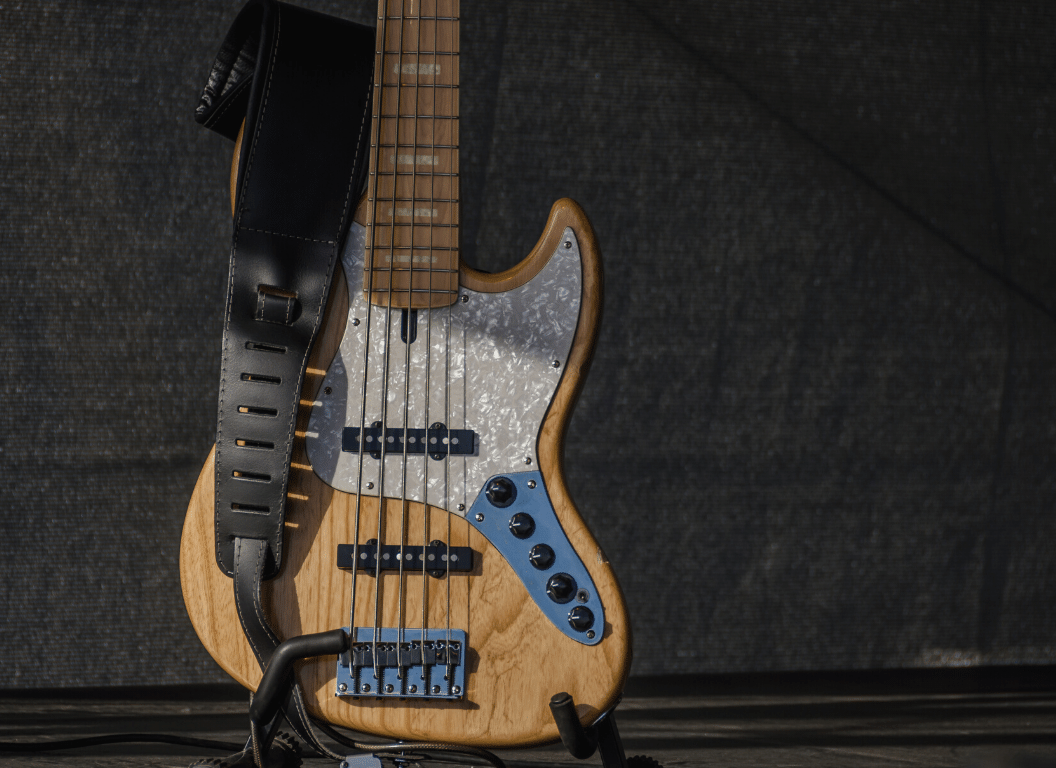Learning how to play a new musical instrument can be both exciting and challenging.
For those curious about mastering the flamenco guitar, starting out with simpler songs can prove beneficial.
These beginner-friendly compositions not only simplify the learning curve but also instill a deeper appreciation for the genre.
Lured by the romantic strings of the flamenco guitar and the captivating rhythm of this traditional form of Spanish music, countless enthusiasts embark on the pursuit of learning it.
This article provides a curated collection of songs best suited for those early in their flamenco guitar learning.
By focusing on these pieces, novice players can gradually elevate their skill level while thoroughly enjoying the process.
Table of Contents
- Easy Flamenco Guitar Songs For Beginners
- 1. “Farruca” by Paco Pena
- 2. “Entre Dos Aguas” by Paco De Lucia
- 3. “Leyenda” by Isaac Albéniz
- 4. “Asturias” by Isaac Albéniz
- 5. “Almoraima” by Paco De Lucia
- 6. “Malaguena” by Francisco Tarrega
- 7. “Gran Jota” by Francisco Tarrega
- 8. “Capricho Arabe” by Francisco Tarrega
- 9. “Soleares” by Tomatito
- 10. “Bulerias” by Tomatito
- 11. “Tangos De La Sultana” by Enrique de Melchor
- 12. “Fantasia” by Niño Ricardo
- 13. “Bronce Gitano” by Sabicas
- 14. “Fandangos” by Sabicas
- 15. “Cafe De Chinitas” by Paco de Lucía
- 16. “Granadinas” by Carlos Montoya
- 17. “Sevillanas” by Manitas de Plata
- 18. “Rumba Flamenca” by Manolo Sanlúcar
- 19. “Siguiriyas” by Pepe Habichuela
- 20. “Bulerias” by Carmen Amaya
- 21. “Tanguillo de Cadiz” by Paco Cepero
- 22. “Alegrias” by Juan Serrano
- 23. “Romance Anonimo” by Narciso Yepes
- 24. “Zambra” by Juan Martin
- 25. “Tarantos” by Esteban de Sanlúcar
- 26. “El Albaicin” by Isaac Albéniz
- 27. “Tientos” by Diego del Gastor
- The Bottom Line
Easy Flamenco Guitar Songs For Beginners
1. “Farruca” by Paco Pena
Paco Pena is widely considered one of the world’s finest flamenco guitarist, known for his mastery of distinctly rhythmic flamenco styles.
His piece, “Farruca,” is a popular pick for beginners in flamenco guitar.
It is in a minor key, offering fresh depth of emotion for new learners.
This composition is typical of the Farruca style, which originally hails from the northern region of Spain, Galicia.
Characterized by a somber mood and intricate, melancholic melodies, “Farruca” gives learners an opportunity to intuitively understand the complex rhythms of flamenco music.
Study of this piece allows beginner guitarists to hone their skills in rhythmic precision, key to mastering flamenco.
2. “Entre Dos Aguas” by Paco De Lucia
The piece “Entre Dos Aguas” was released by the great guitarist, Paco De Lucia.
De Lucia was known for his profound flamenco style, combining the traditional with his own unique touches.
This instrumental tune has a compelling rhythm that encapsulates the essence of flamenco music.
It’s an excellent starting point for those looking to delve into flamenco guitar playing.
The choice of the title, which translates as ‘Between Two Waters’, reflects on De Lucia’s unique style of blending different influences in his music.
Its complex melodies and steady beats provide a challenge for beginners, but mastering it would give a big satisfaction.
Resulting in a beautiful musical experience, this song is a classic example of easy flamenco guitar songs for beginners.
3. “Leyenda” by Isaac Albéniz
Exemplifying his reverence for Spanish music, Isaac Albéniz composed “Leyenda”, which has since become a go-to piece for aspiring Flamenco guitar students.
Albéniz, a pianist and composer from the late Romantic period, originally wrote this piece for the piano, though it is perhaps better known in transcriptions for classical guitar.
The song, which is often played with various guitar techniques such as tremolo and rasgueado, provides a chance to develop these skills while also capturing the lively and passionate nuances of Flamenco.
Beyond its technical aspects, “Leyenda” embodies the soulful spirit of Flamenco music and is an excellent introduction to learning more complex compositions.
As a beginner, learning “Leyenda” will not only advance your Flamenco guitar skills but also give you a deeper appreciation for this expressive form of music.
4. “Asturias” by Isaac Albéniz
Regarded as one of the greats, Isaac Albéniz was a prominent Spanish composer and pianist.
“Asturias” is considered his most famous piece, beloved for its unmistakable flamenco guitar sound.
This piece was initially written for the piano, but it has been skillfully adapted for the guitar which brought it great recognition.
Despite its title, “Asturias” doesn’t sound like traditional music from Asturias, but resembles Andalucian flamenco music instead.
The slow introductory section of the song, followed by a fast and melodic middle part, creates an interesting contrast that captures listeners.
The track’s complexity might be challenging for beginners, but mastering it can offer a sense of tremendous personal achievement.
Starting with “Asturias” can encourage learners to nurture precision and appreciation for flamenco’s unique rhythms and song structures.
5. “Almoraima” by Paco De Lucia
The “Almoraima” by Paco De Lucia is a famous flamenco guitar piece that has captivated audiences for many years.
This song is recognizable and easy to learn for beginners who are interested in playing flamenco style.
Paco De Lucia was a world-renowned Spanish flamenco guitarist, composer and producer, considered by many to be one of the finest guitarists in the world.
His music is characterized by its complexity and speed, yet he manages to make it accessible for beginners.
“Almoraima” is typical of De Lucia’s style, featuring rapid runs and flamboyant strumming, as well as intricate fingerpicking.
However, despite its complexity, this song is a great starter piece for novice flamenco guitarists.
The song is named after the “Almoraima” estate located in the province of Cadiz, Spain, which is a significant area in the history of flamenco.
The lyrics are decidedly Spanish and tell a story of love and longing, a common theme in flamenco music.
6. “Malaguena” by Francisco Tarrega
Among the iconic pieces by Francisco Tarrega is “Malaguena.”
Best known for his contributions to classical guitar literature, Tarrega’s “Malaguena” stands as a crucial contribution to Flamenco music.
This beautiful song shines a spotlight on the characteristic Flamenco technique of the right-hand thumb, creating a captivating melody that makes this a popular choice for beginners.
Its complex textures can provide a challenge, but also an opportunity for growth for novice guitarists.
Despite its complexity, “Malaguena” has a unique charm that makes it an enjoyable piece to learn even for beginners.
Its rhythm and structure, which mirror the traditional Spanish dance it is named after, offers beginners an introduction to Spanish music culture.
The melody is intensely expressive and demonstrates the flamenco’s passionate nature.
“Malaguena” is a piece that invites exploration and offers beginners an enjoyable and deeply rewarding challenge.
Without a doubt, learning “Malaguena” by Francisco Tarrega is a remarkable journey that will surely bring a beginner’s flamenco guitar skills to a new level.
7. “Gran Jota” by Francisco Tarrega
“Gran Jota” by Francisco Tarrega is a notable piece that showcases the composer’s remarkable mastery of the flamenco guitar style.
Tarrega, often hailed as the father of classical guitar, is well-known for his compositions that are filled with passion and depth, effortlessly blending traditional Spanish music with his unique, innovative technique.
The song “Gran Jota” is no exception to Tarrega’s exceptional compositional style, delivering high levels of technical difficulty that serve as a challenge for beginners eager to enhance their skills.
With its rapid finger plucking and intricate chord progressions, the piece demands considerable focus and precision from the player.
My interpretation of “Gran Jota” is that it’s a brilliant exercise in spatial awareness on the fretboard, forcing beginners to pay closer attention to their finger placement and movement and significantly improving their overall skills.
However, despite its challenges, “Gran Jota” still remains a great starting piece for beginners, offering a wonderful opportunity to dive into the world of flamenco guitar.
8. “Capricho Arabe” by Francisco Tarrega
Francisco Tarrega was a highly influential composer and guitarist from the classical era who contributed significantly to the foundation of modern classical guitar technique.
“Capricho Arabe” is celebrated for its beautiful melody that evokes the flavor and emotion of Arabic music.
This complex piece of music may not be the easiest for beginners, but it can certainly inspire those looking to play flamenco and showcase their interpretative skills.
The iconic melodic lines and vibrant flamenco influences make it a memorable and worthwhile learning experience.
Learning to play this song smoothly will require effort and consistency, but it’ll be a rewarding process as it helps build a strong foundation in flamenco techniques.
9. “Soleares” by Tomatito
“Soleares” by Tomatito is a timeless piece in the traditional flamenco category.
Tomatito, or José Fernández Torres, is a world-renowned Spanish flamenco guitarist.
Born into a family of esteemed flamenco musicians, Tomatito combines the distinct, raw emotion of flamenco with his innovative style.
The song, “Soleares”, showcases Tomatito’s exceptional abilities as a flamenco guitarist.
He masterfully utilizes rasgueado techniques, rapid scale runs, and the characteristic phrygian mode to bring forth the passionate and dramatic nature of flamenco music.
For a beginner, starting with “Soleares” could prove to be a great introduction to the complex world of flamenco guitar playing.
Although it requires patience and dedication, it can be a significant step in understanding and learning this deeply expressive art form.
The complex rhythms and unique fingerstyle techniques characteristic of flamenco are prominent in this piece, providing beginners with a strong foundation.
“Soleares” is a classic flamenco piece, representing the raw, authentic emotion inherent in this genre of music.
Therefore, it is not only an excellent piece for learning, but also for experiencing the pure essence of flamenco.
10. “Bulerias” by Tomatito
“Bulerias” is a prominent piece in the flamenco repertoire of Spanish guitarist Tomatito.
This versatile artist is well-known for his influential, innovative contributions to flamenco music, often blending traditional with more contemporary styles.
The track “Bulerias” showcases the rhythmic complexity typical in Buleria, a form of flamenco characterized by a fast tempo and dynamic playing.
Tomatito’s technical prowess, particularly his strength in intricate finger-picking techniques, is on full display in this song.
Yet, despite its complexity, it’s a piece that inspires many beginners due to its energetic rhythm and engaging melody.
While it may not be the easiest song to start with, “Bulerias” provides a glimpse into the highly expressive and technically demanding nature of flamenco musicmaking it worth the challenge.
Learning this song by Tomatito would certainly be a worthwhile addition to any aspiring flamenco guitarist’s repertoire.
11. “Tangos De La Sultana” by Enrique de Melchor
Enrique de Melchor was a renowned flamenco guitarist known for his expressive style.
“Tangos De La Sultana” is a piece that brilliantly showcases his extraordinary flamenco skills.
The music encapsulates the vibrancy and energy characteristic of traditional Flamenco music.
It is a great track for beginners because of its logical progression and steady pace.
Paying close attention to this piece can provide beginners with valuable insight on the structure of flamenco music.
It also serves as an inspiration to those who want to evolve their skills in flamenco guitar.
Enrique’s ability to blend complexity and musicality is an invaluable lesson for those starting in the Flamenco music genre.
With consistent practice of “Tangos De La Sultana”, beginners can solidify their basic flamenco techniques and gradually increase their proficiency.
12. “Fantasia” by Niño Ricardo
As part of easy Flamenco guitar songs for beginners, “Fantasia” by Niño Ricardo offers a dazzling introduction to the genre.
Niño Ricardo, born as Manuel Serrapí Sánchez, was a renowned Spanish flamenco guitarist renowned for his artistic creativity and unique style.
“Fantasia” demonstrates his innovative composition skills, with rich strumming patterns and intricate finger-picking techniques.
The piece exudes a wistful and nostalgic mood, making it a wonderful track for beginners to capture the emotional depth of flamenco.
While technically demanding, nailing the piece can give the novice a real sense of achievement and a flavour of flamenco’s expressive power.
The song, though complex, is notable for its accessible structure, giving beginners an opportunity to grow their skills.
In practicing “Fantasia”, beginners can make significant strides in flamenco guitar playing.
13. “Bronce Gitano” by Sabicas
Bronce Gitano, composed by Sabicas, sets the bar high for flamenco guitar music.
The song’s popularity is not surprising given Sabicas’ reputation as a widely recognized and admired flamenco guitarist.
Known for pushing boundaries, Sabicas masterfully melds traditional flamenco composition with daring strumming techniques in this piece.
The result is Bronce Gitano, a track that delivers a unique musical experience that still respects its flamenco roots.
The listening experience is filled with vivid imagery evoked by the music, as if the strings are telling a story all their own.
While it’s easy to get lost in the complexity of the composition, the underlying tones of passion and intensity in Bronce Gitano keep the listener grounded.
Neither frenzied nor too languid, the tempo strikes a beautiful balance, showcasing Sabicas’s extraordinary control over his craft.
Thus, while there are many other tracks, Bronce Gitano stands out in Sabicas’s body of work for its memorable composition.
14. “Fandangos” by Sabicas
“Fandangos” is a song composed by iconic Flamenco guitarist, Sabicas.
Sabicas was born in Spain and is renowned internationally for his stunning flamenco guitar performances and compositions.
The song, “Fandangos,” is characterized by its dramatic guitar strumming and fingerpicked melodies.
As its name implies, it is based on the traditional Spanish dance fandango.
This elevates the song and makes it a great introduction for beginners to traditional flamenco music.
“Fandangos” affords novice guitarists an opportunity to explore the depths of flamenco guitar playing, showcasing essential techniques such as rasgueados and picados.
Learning this piece will significantly improve your technical proficiency and enable you to immerse yourself in the expressive world of Flamenco guitar.
In my interpretation, “Fandangos” invokes a sense of passion and intensity which is innate to Flamenco music, making it a rewarding piece to master.
Though it may challenge your skills initially, continuing to practice this piece will undeniably enrich your comprehension of Flamenco music.
15. “Cafe De Chinitas” by Paco de Lucía
“Cafe De Chinitas” by Paco de Lucía is a popular choice for beginners interested in Flamenco guitar.
The song exhibits traditional flamenco rhythms that are prominent in Lucia’s works, giving beginners a sound introduction to the genre.
Paco de Lucía is known as one of the finest flamenco guitarists in history, celebrated for his technical proficiency and his unique interpretations of flamenco music.
In “Cafe De Chinitas”, simplicity and gracefulness combine, offering a song that is accessible for beginner guitarists but still rich with emotion and complexity.
The beauty of the song lies in its elegantly constructed melody, which serves as a fantastic starting point for anyone new to flamenco guitar.
Beneath its surface-level simplicity, “Cafe De Chinitas” teaches important flamenco techniques like strumming variations and finger picking, making it an essential piece for any beginner’s repertoire.
With this song, beginners can start to grasp the depth and versatility of flamenco music, setting a solid foundation for this distinctive genre.
16. “Granadinas” by Carlos Montoya
The song “Granadinas” is a notable piece by legendary flamenco guitarist, Carlos Montoya.
This captivating piece showcases Montoya’s skill in evoking emotions through his virtuosic fingerstyle technique.
“Granadinas” provides a good starting point for beginners learning flamenco guitar, with its repetitive melodic lines and steady rhythm.
Montoya’s style is distinctive and influential, and this song provides an excellent example of his unique approach to flamenco guitar.
Every note in “Granadinas” carries a touch of Montoya’s authenticity and his deep understanding of flamenco music’s soul.
This song remains a favorite among flamenco lovers, especially those interested in learning and understanding the traditional Spanish genre.
17. “Sevillanas” by Manitas de Plata
Manitas de Plata, born Ricardo Baliardo, was a renowned French flamenco guitarist.
Despite having no formal training, his captivating performances have earned him global admiration.
His composition, “Sevillanas“, is a spirited piece showcasing the traditional music and dance of Seville.
This track, packed with fast-paced strumming and intricate fingerwork, is an excellent introduction for beginners to the flamenco guitar.
Within this song, beginners can grasp the importance of precision and rhythm in flamenco music.
Having the opportunity to learn flamenco through the work of a legend such as Manitas de Plata is indeed a privilege for any beginner.
His “Sevillanas” takes you on a delightful journey, unraveling flamenco’s richness, depth, and excitement, step by step.
18. “Rumba Flamenca” by Manolo Sanlúcar
Manolo Sanlúcar is one of Spain’s most celebrated flamenco guitarists.
His composition, “Rumba Flamenca”, is a brilliant showcase of his innate talent and deep understanding of the traditional flamenco style.
The song blends lively rhythms and intricate guitar lines, making it an invigorating listen for any flamenco enthusiast.
As a beginner, you might find the tempo of “Rumba Flamenca” challenging, but its rich melody offers a wonderful introduction to the genre’s technique and rhythm.
Sanlúcar’s musical style in this piece is genuinely captivating, giving new players a real taste of Spain’s cultural heritage.
“Rumba Flamenca” is a piece that encapsulates intricate fingerstyle patterns and vibrant strumming, providing beginners with a fantastic foundation from which to develop their own style.
It’s always a thrill to discover such authentic flamenco music as that created by Manolo Sanlúcar.
19. “Siguiriyas” by Pepe Habichuela
The song “Siguiriyas” is a riveting piece by acclaimed flamenco guitarist, Pepe Habichuela.
Recognized as one of the pillars of flamenco guitar, Pepe Habichuela hails from a family with an extended history in the field of flamenco music.
The depth of musical knowledge in his lineage contributes to the rich authenticity of his artistry and his compositions.
The song “Siguiriyas” in particular, beautifully showcases Pepe Habichuela’s superb command over the intricate flamenco guitar techniques.
Notably, it offers a brilliant introduction for beginners to the flamenco guitar genre.
The elegance and fluidity in this piece serve as a great source of inspiration for novice flamenco guitarists.
The rhythm structure and tempo of “Siguiriyas” also make it a manageable challenge for those just starting their musical journey in this unique form of Spanish art.
With its engaging melody and the underlying flamenco soul, this song by Pepe Habichuela is a must-learn for every flamenco guitar beginner.
20. “Bulerias” by Carmen Amaya
Carmen Amaya, hailed as the Queen of the Gypsies, is one of the most renowned Flamenco artists throughout history.
She began her career in flamenco by dancing, but quickly made her mark with the guitar, demonstrating the same intensity and passion in her playing as in her dance.
Her rendition of the “Bulerias” displays her versatility as an artist, combining her dance heritage and her guitar skills into one performance.
The “Bulerias” style is a faster-paced flamenco form, showcasing the energy and bravura that Carmen Amaya embodies in her playing.
As a beginner to flamenco guitar, it’s a good idea to study her rendition of “Bulerias” to familiarize yourself with rhythm complexities, pronounced strumming techniques and finger agility.
Do not be discouraged if you find it challenging at first, as mastering this piece will certainly boost your skill level in flamenco guitar playing.
Take your time, practice slowly, and enjoy the beauty of Flamenco that Amaya captures in her rendition of “Bulerias”.
21. “Tanguillo de Cadiz” by Paco Cepero
Paco Cepero is a renowned Spanish flamenco guitarist, known for his distinctive playing style and his contribution to the flamenco genre.
“Tanguillo de Cadiz” is one of his most beloved works, showcasing his skill and artistic approach to traditional flamenco.
This song is unlike others in the genre due to its relaxed tempo and joyful, playful rhythm.
Its melody strolls softly, carrying a distinct Andalusian charm that captivates listeners.
“Tanguillo de Cadiz” is a prime example of a flamenco song that beginners can grasp and appreciate for its complexity, beauty, and accessibility.
Paco Cepero’s compositions, such as this one, provide a great starting point for beginners venturing into the world of flamenco guitar.
Aspiring flamenco guitarists can learn a lot from his technique and musicality, helping them shape their own individual style.
The song’s rhythmic pattern and chord sequences make it an excellent practice piece for those learning the basics of flamenco.
22. “Alegrias” by Juan Serrano
Considered one of the great maestros of flamenco guitar, Juan Serrano is a remarkable musical force to be reckoned with.
His creation “Alegrias” is widely regarded as a beautiful and compelling entry-level flamenco song that captivates listeners with its rich and accessible melodic lines.
The song’s rhythm, originating from the southern Spanish region of Andalusia, carries a joyful and uplifting syncopation that makes it a delight to learn for beginners.
“Alegrias” showcases Juan Serrano’s brilliant command over flamenco guitar techniques like the strumming ‘rasgueado’ and the finger plucking ‘picado’.
It’s a fantastic piece that allows budding guitarists to explore the grandeur of flamenco music while nurturing their technical prowess.
23. “Romance Anonimo” by Narciso Yepes
Known as a virtuoso of classical guitar, Narciso Yepes shines in his rendition of “Romance Anonimo“.
This beautifully melodic piece is frequently associated with beginner flamenco guitar due to its relatively straightforward structure.
Iconic for its distinctive melancholy melody, this piece, often referred to as “Spanish Romance”, is a great starting point for learners aiming to master fingerstyle technique.
While attributed to Yepes, the original authorship of the composition is obscure, adding an element of mystery and allure.
Yepes’s interpretation is both gentle and poignant, reflecting the emotive depth of flamenco music.
His command of expressive musicality engages listeners, making this piece an enjoyable introduction to the beautiful world of flamenco guitar.
“Romance Anonimo” serves as a brilliant platform to explore rhythmic and melodic nuances inherent in this genre.
24. “Zambra” by Juan Martin
Juan Martin is known for his exquisite flamenco guitar skills.
“Zambra” is a particular highlight in his expansive discography.
The song exhibits tight rhythms, beautiful melody lines, and Martin’s signature intricate finger-picking techniques.
“Zambra” demonstrates not only Martin’s great skill but also his deep appreciation for traditional Andalusian music.
For beginners looking to really delve into authentic flamenco, this piece is a must.
It offers plenty of opportunities to improve your timing, develop your sense of melody, and practice finger-picking.
Despite this, its structure is simple enough for beginners to follow and learn from.
Just remember not to get discouraged if it’s challenging at first – after all, practicing and learning are what playing any instrument is all about.
“Zambra” by Juan Martin will not just let beginner guitarists appreciate flamenco music, but also improve their skills while at it.
25. “Tarantos” by Esteban de Sanlúcar
One of the more complex flamenco styles is captured in “Tarantos” by Esteban de Sanlúcar.
Sanlúcar, a veteran flamenco guitarist, hails from Spain and is known for his enchanting and deep interpretations of flamenco music.
“Tarantos”, though not for the absolute beginner, is a beautiful song that can help an entry-level guitarist expand their skillset once they’ve got a handle on the basics.
The song features the distinct rhythm and pacing typical to the ‘tarantos’ style of flamenco, challenging the player to keep precise timing.
The raw emotional delivery that “Tarantos” requires is also characteristic of Sanlúcar, as he often draws upon deep feelings to imbue his music with passion.
This song is a great choice for beginners looking to dive a bit deeper into the world of flamenco guitar.
26. “El Albaicin” by Isaac Albéniz
Isaac Albéniz, a renowned Spanish pianist, composed “El Albaicin.”
Although Albéniz is widely recognized for his piano compositions, his work has been adapted for the guitar by many artists.
Named after a locality in Granada, Spain, “El Albaicin” is an emotionally charged piece filled with captivating harmonies and intricate melodies.
The structure of “El Albaicin” is both dynamic and engaging, making it an excellent choice for budding flamenco guitarists.
Despite its complex melodies, aspiring guitarists can pick up the fundamental rhythm patterns by initially focusing on the bass line.
As students gain familiarity, they can then explore the layered textures of the piece, presenting a challenging yet rewarding progression.
“El Albaicin” by Isaac Albéniz is a compelling practice piece for beginners looking to expand their flamenco repertoire.
27. “Tientos” by Diego del Gastor
Diego del Gastor is widely known for his authentic and traditional flamenco guitar interpretations.
Born in 1908 in Andalusia, Spain, he has shaped the flamenco genre with his unique, soul-touching compositions, among which “Tientos” stands out.
“Tientos” is a great piece to begin your flamenco journey – it’s not overly complex, yet it carries Diego’s signature flamenco style.
This song combines emotionally alluring melodies with complex rhythm patterns characteristic of the Tiento style.
While playing, you might notice its pace is slower and introspective, inviting a deeper emotional engagement with the guitar.
Perfect for beginners eager to learn timeless flamenco techniques that would serve as a base to more complex compositions.
The haunting beauty of “Tientos” encapsulates the essence of flamenco music, making it an excellent starting point.
Although simple in composition, it vividly showcases Diego del Gastor’s creative genius in the flamenco genre.
The Bottom Line
The diversity of music composed and performed by these artists speaks volumes about the rich tapestry of Spanish culture.
Each of these pieces, from Farruca by Paco Pena to Tientos by Diego del Gastor, offer listeners a captivating journey through different melodies, techniques and styles.
The enchanting strums of the guitar and the intense passion of flamenco dance seen in songs such as Bulerias by both Tomatito and Carmen Amaya, reveal a deep respect for tradition, heritage and artistry.
Yet, there’s also a willingness to experiment, to blend old with new, and to break boundaries shown through compositions like Fantasia by Niño Ricardo or Alegrias by Juan Serrano.
So, whether you’re an avid aficionado or a casual listener, this collection of works provides a great blend of wonderfully diverse and evocative Spanish music.

Born and raised in Florida! I’ve been playing guitars for the past 5 years. Love to learn, and I’m always striving to achieve greater heights in music. Currently have a Fender Stratocaster as my main guitar.




